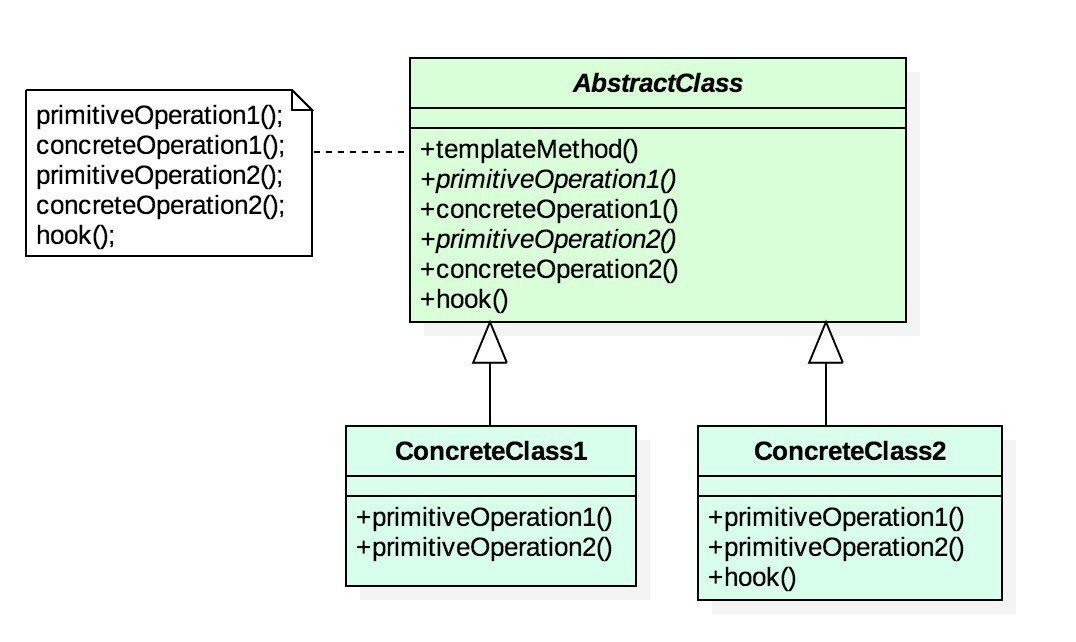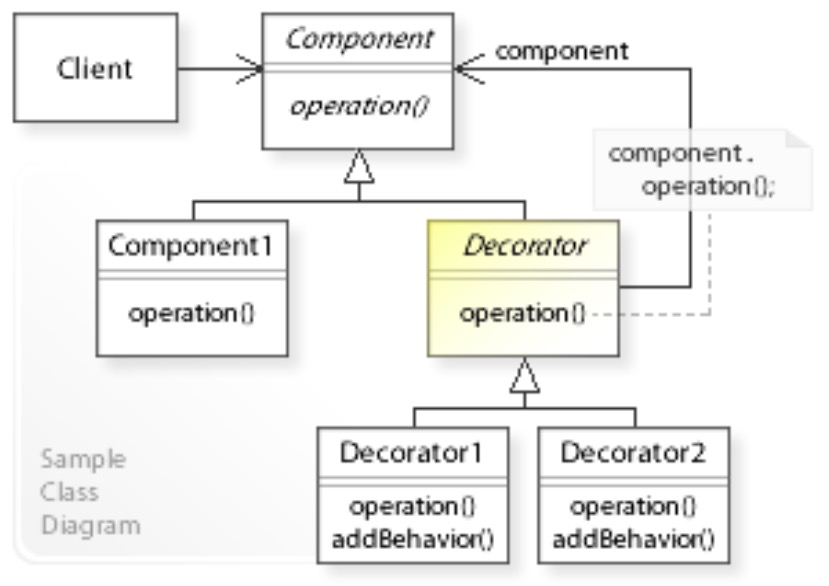COMP2511 Week 9
Adgenda
- Admin Stuff
- Template Pattern
- Decorator Pattern
Admin Stuff
- Assignment 2 interviews (~10 mins)
- Let me know if you are still doing the assignment
- Assignment 3 released
- Lab 08 is due Week 9 Friday, 5pm
- Lab 09 is due Week 10 Monday, 8am
Template Pattern
Template Pattern
What is this?
The template Method is a behavioural design pattern that defines the skeleton of an algorithm in the superclass but lets subclasses override specific steps of the algorithm without changing its structure.
Template Pattern
- Primitive operations: Operations that have default implementations, or must be implemented by subclass.
- Final operations: Concrete operations that cannot be overriden.
- Hook operations: Concrete operations that do nothing by default and can be redefined by subclass if necessary. This gives the subclass the ability to "hook into" the algorithm at various points.


Template vs Strategy
- Template method is based on inheritance: Alter parts of the algorithm by extending those parts in subclasses
- Strategy is based on composition: You alter parts of the object's behaviour by supplying it with a different strategy
- Strategy can change their behaviour after creation (supply with new behaviour), templates cannot change behaviour after construction
Code Demo
In a simple game, different types of characters move around on a grid fighting each other. When one character moves into the square occupied by another they attack that character and inflict damage based on random chance (e.g. a dice roll).
- A king can move one square in any direction (including diagonally), and always causes 8 points of damage when attacking.
- A queen can move to any square in the same column, row or diagonal as she is currently on, and has a 1 in 3 chance of inflicting 12 points of damage or a 2 out of 3 chance of inflicting 6 points of damage.
- A dragon can only move up, down, left or right, and has a 1 in 6 chance of inflicting 20 points of damage.
Use a Template Strategy to model a solution to this problem. The code has been started for you inside the Character class.
Decorator Pattern
Decorator Pattern
Decorator is a structural design pattern that lets you attach new behaviors to objects by placing these objects inside special wrapper objects that contain the behaviors.
- Adds functionality to a class at run-time. Used when subclassing would result in an exponential rise in new classes
- Attaches additional responsibilities to an object dynamically
- Avoids implementing all possible functionality in one complex class
- Prefers composition over inheritance

- Client: refers to component interface
- Component: defines a common interface for Component1 and Decorator objects
- Component1: Defines an object that gets decorated
- Decorator: maintains a reference to a Component object, and forwards requests to this component object (
component.operation()) - Decorator1, Decorator2, ...: implement additional functionality (
addBehaviour()to be performed before and/or after forwarding a request)

Decorator Pattern
public interface Component {
void doOperationA();
void doOperationB();
}
public class ConcreteComponent implements Component {
@Override
void doOperationA();
@Override
void doOperationB();
}
public abstract class Decorator implements Component {
private ConcreteComponent cc;
}
public class ConcreteDecoratorX extends Decorator {}Code Demo
This exercise continues on from Exercise A.
Suppose a requirements change was introduce that necessitated support for different sorts of armour.
- A helmet reduces the amount of damage inflicted upon a character by 1 point.
- Chain mail reduces the amount of damage by a half (rounded down).
- A chest plate caps the amount of damage to 7, but also slows the character down. If the character is otherwise capable of moving more than one square at a time then this armour restricts each move to distances of 3 squares or less (by manhattan distance).
There are no restrictions on the number of pieces of armour a character can wear and that the "order" in which armour is worn affects how it works. You may need to make a small change to the existing code.
COMP2511 22T3 Week 9
By Jayden Leung
COMP2511 22T3 Week 9
- 156



